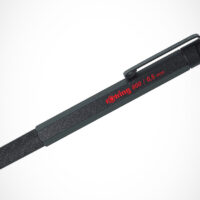Last year, we got an inkling on Magic Leap’s plans to partner with like-minded companies like Onshape to create more interactive 3D work environments using their not-quite-so-cheap AR/VR headset. By allowing multiple users to see and interact with 3D models in a real-world context simultaneously, working on models for engineering, product design, video games, and special effects became a heck of a lot easier.
Now, Magic Leap has teamed up with Wacom for an even more immersive collaborative AR/VR experience in the form of the Spacebridge interactive workspace.

Upon putting on a Magic Leap One headset connected to a Wacom Intuos Pro tablet, users activate Spacebridge, which takes 3D data and integrates it into a real-world space. Collaborators using the headset in the same area can interact with the 3D data in real time, allowing them to adjust and modify the model simultaneously.
Interacting with 3D models requires the use of the Wacom Intuos Pro tablet and a stylus rather than a traditional AR/VR controller. Pressing the stylus’ middle button opens up a menu that allows a user to pick from various colors and pen tools while the forward button lets you swap through move tools such as rotation, scale, and drag.
One particularly useful feature is the ability to add footnotes on a digital whiteboard; notifications from both you and your co-workers for specific 3D models can be brought up to make adjustments easier. It may seem like a small addition, but not having to switch back and forth from an actual whiteboard can theoretically save teams a lot of time.
“Magic Leap and Wacom share the belief that the spatial computing creative design experience should feel natural, intuitive, and inclusive of the world and other people,” says Rony Abovitz, CEO of Magic Leap. “The solutions we are developing together now, will hopefully inspire and empower the next generation of creatives to design and build new products, living spaces, and even worlds.”
The Spacebridge application is still in its beta stage, but both Wacom and Magic Leap are hoping the finished program can foster a more interactive workspace for 3D designers. We’ll have to get our hands on it ourselves, but maybe this will finally justify the purchase of an almost $2,300 headset.






